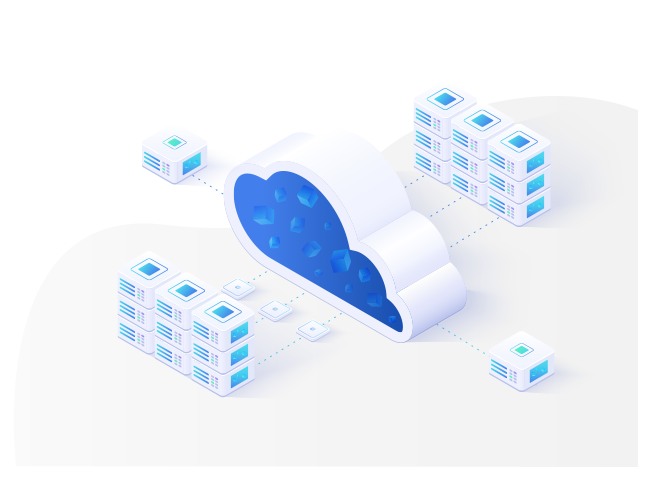
Out Now: Oracle Exadata System Software 21.2
Oracle Exadata System Software Release 21.2.0.0.0 is now out, with a host of new capabilities, ready to take the users a level up in manageability, scalability, and performance, and by doing so, affording the legendary platform additional reliability in a fast-moving, high volume, and high-performance setup. This release also incorporates the Oracle’s consistent effort in redefining – planning, configuration, and continuation of the Oracle Exadata Database for administrators. For example, in the Exadata System Software Release 19.3 and 20.1, Oracle had combinedly introduced about 40 new innovations, each ensuring the peak productivity of every Exadata Database and Storage Server ever deployed. And, now with the Oracle Exadata System Software 21.2.0.0.0 – new, and superior standards are enforced.
List of major enhancements in the Exadata System Software 21.2
Note: First things first, all the new software capabilities are functional across all supported generations of Exadata machines, and RoCE / InfiniBand systems. Also, it is an optimal upgrade for users looking to make a shift to the Oracle Linux 7.
- ‘Release 21.2’ is for consistent app performance minus Storage Index rebuilding
Exadata administrators know the significance of Storage Indexes in dodging pointless I/O ‘from’ and ‘to’ the Storage Servers. Until now, Storage Indexes were routinely created to track and preserve the min/max values. Further, they were kept in the temporary memory of every Storage Server and utilized by analytical workloads and the data warehouse for removing I/O. However, System Software 21.2 onwards, the Storage Indexes are persisted on the local disk to prevent the recreation of the storage index aftermath maintenance or downtime, planned or unplanned. By ruling out the cycles from rebuilding Storage Indexes post server reboot, consistent application performance is ensured.

- The Columnar Cache Theory
Being a subset of the Exadata Smart Flash Cache, the Columnar cache is significant for retaining data in a columnar arrangement. And, in a query performance adjustment, the data in the Exadata Smart Flash Cache is meant to convert and reside in the Columnar cache. However, with the new Exadata System Software 21.2, upon a storage server’s turning off while running in the Write-Back mode, the columnar cache is persisted, instantly allowing more consistent query performance post a Storage Server reboot.
- The IROM Cluster Plan
The I/O Resource Management (IORM) is widely known for its productivity in enforcing user-defined guidelines / policies on the workloads and databases while extending the Oracle Exadata Storage Servers resources, removing any disturbances to the critical databases. However, with the new Exadata System Software 21.2, DMAs can now readily allocate storage resources built on cluster boundaries, instead of the individual database / consumer groups. This capability can lead to greater flexibility, and an integrated resource allocation. By declaring the plan straight at the cluster level, the new and existing databases inside a cluster can readily obtain the I/O plan for the specific cluster. Needless to mention, having new databases deployed short of a specific plan would certainly not override the current database workloads.
- Metadata sharing across sessions in Smart Scan
The most rudimentary element in an Exadata Storage Software for analytical workloads is none other than the Smart Scan operation. When an Exadata dispatches queries to its Storage tier, the allied metadata also accompanies. Query metadata comprises data, e.g., projected columns, bloom filters, session info, predicates, and so on. These information are fundamental to running the query offload into the storage server. With the new Exadata System Software 21.2, instead of each Parallel Query encapsulating the metadata in each execution, the common query metadata is dispensed across Smart Scan sessions pertaining to the same parallel query. This mechanism/capability minimizes individual parallel query processing on the storage server, and by doing so, increases the total system throughput.
Small features making big difference: the add-ons
Exadata Networking Infrastructure made more manageable – The Exadata System Software Release 21.2 brings capabilities to oversee and modify Cisco switches leveraging the Oracle Auto Service Request (ASR) and the Patch Manager Utility (a.k.a. patchmgr). The feature includes applicability on the latest Cisco Management Switch, as well as the RoCE Network Fabric switches.
Rebalancing Operations 21.2 – Maintaining redundancy levels is indispensable in a highly controlled database environment. The new set of choices in the CELLCLI command can now enable Exadata to autonomously rebalance data prior to eliminating the ASM disks.
Lightning-fast upgrades and recovery, orchestrated – Zero downtime is the vogue in today’s database management strategy, and every minute passing-by extends the opportunity to further outperform the set standard. With the System Software 21.2, the updates are now blazing fast, minimizing the duration for updating each server by at least five-minutes via pre-staging the ILOM updates. In terms of a complete rack Exadata, the time efficiency unlocked in rolling-upgrade is equivalent to two-hours.
Component-induced failures now have the additional autonomous capability for recovery in the High Capacity and Extended Storage Servers. Flash Cache failovers are also quicker, contributing to the overall reliability and resilience in Storage Server performance, all made possible by the Oracle Exadata System Software Release 21.2.0.0.0.




